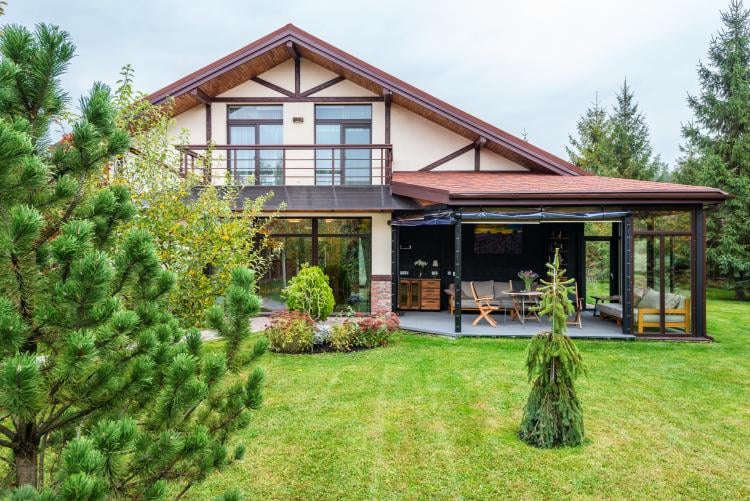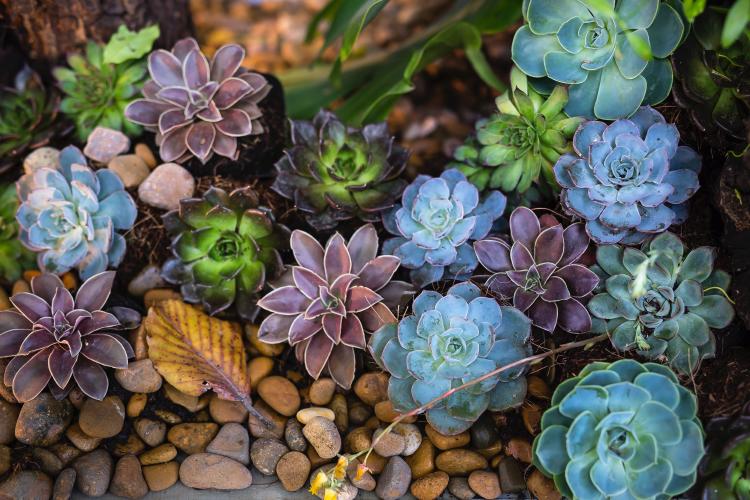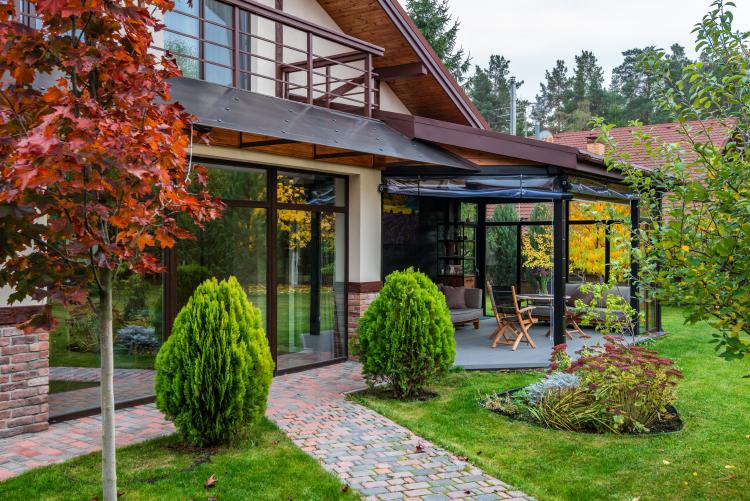
To many different people, creating the perfect garden view implies different things. There is a lot to think about when it comes to designing the garden of your dreams. Even inexperienced gardeners may build stunning green spaces that are vivid and inviting by following a few simple design concepts and staying focused on the objective of the growing place. In this article, I'm going to share with you 27 Tips and Tricks for How to Design the Perfect Garden View.
If you're not sure about how to start with gardening, then having a read at Gardening Made Easy: How to start with your own Garden might help you out.
Spend a day or two measuring the number of hours of sunlight your gardens receive each day to ensure you include light-appropriate plants in your design. Keep in mind that full-sun plants require at least 6 hours of direct sunlight, while partial-shade plants require between 3 and 6 hours, and shade-tolerant plants thrive from 2 or 3 hours of direct sunlight or receive indirect or filtered light all day. This way you will create the perfect garden view.
Make a rough sketch of your yard, including entertainment spaces, your house, and any other structures. Enlarge the sketch and outline existing landscape elements such as trees, plants, and garden view. Make a sketch of the intended plantings to determine how they will integrate into the current landscape.
Estimate the amount of room you want to commit to a planting bed before you start sketching. Using the measurements, create a scaled blueprint on graph paper. With the mature sizes of the plants in mind, pencil in desired plants to get a realistic estimate of how many you can fit into the area.
Winter is a great season to spot bare-bones trees and shrubs in your landscape because most trees and shrubs are only exposing their bare bones. Examine your landscape for areas that could benefit from a winter interest boost. Think about planting evergreens, berry-bearing shrubs, and trees with intriguing shapes or bark to increase four-season attractiveness.
Determine whether you want a clipped formal design, a casual cottage appeal, a native prairie aesthetic, or a mix of styles.

Are you a fan of pastels? Do you get your creative juices going when you see red-hot colors? Working within a color scheme will assist you in creating a coherent environment and will prevent you from purchasing incorrect plants during times of weakness. you can get the right Flower Seeds: The Best Options for a Beautiful Garden
Perennials are plants that are alive the whole year-round. Set aside a sunny spot to start perennials from seed. Sow the seeds in early spring, and you'll have a plethora of plants to fill out your borders by mid-to-late summer.
Determine how much you want to spend on plantings, mulch, and soil additives this year. Plan on laying out paths and purchasing larger, structural plants first. When money is scarce, consider filling in your design over the course of time.
Are you a fan of pastels? Or do you prefer vibrant colors? Working within a color scheme will assist you in creating a coherent environment and will prevent you from purchasing incorrect plants.
Many spring garden catalogs provide bare-root forsythia, hydrangea, and red-twig dogwood seedlings for a low price. The stick-like, rooted saplings take a few years to fill out and flower, but their low pricing allows you to mass them or add them as a repeating element across the landscape.
Plants with varying bloom times should be used to ensure a succession of blooming throughout the year. This way, you will have a colorful garden view at all times. You can grow some veggies in your garden around fall time. Get to know the 10 Fall Vegetables to Easily Grow at Home, for Beginners
Plan trellises, hedges, and plant groups to hide unsightly views, define garden rooms, and muffle traffic noise. Living walls are really trendy at the moment so it won't be difficult to find the correct tools to make it.
Break up the lawn into little parts to give your landscape an intriguing, modern feel. The divisions created a flowing design for their lawn, accentuated by bright flowerbeds. It gives more interest to a large patch of grass.
Ribbons of lawn can be used to create an intriguing aspect and add a sense of playfulness to your environment. It also provides a sense of discovery because you never know what you'll find when you explore alternative paths.
The texture is just as crucial as color when it comes to building up a garden view. A sensation of comfort is created by repeating texture. However, too much of the same texture becomes monotonous, so don't be afraid to mix it up. Smooth river rocks make a stunning contrast here.

Edging provides your yard with a neat, tidy appearance. Make your edging a design feature to offer interest and creativity. The vast strip of rock between the lawn and the flowers here creates the illusion of a rushing river.
With a few bits of art, you may add surprises and interest to your plants. You can recycle old glass bottles and turn them into art. With the addition of some beads, you can use them to create an eye-catching mosaic sculpture.
Ornamental grasses are excellent plants for adding movement to your yard. They add visual interest to the environment, whether you choose species with soft, arching leaves or airy seed heads like the prairie dropseed.
Simply by choosing interesting plant combinations, you can create a lovely garden view. Look for strong contrasts in color or texture. The ferny, blue-green foliage of bleeding heart, for example, contrasts beautifully with the golden carpet of Irish moss. Red sedum adds a wonderful touch to both.
Using found objects, you may give your yard a one-of-a-kind look. You can add objects to the corners of your garden to create some mystic.
Another way could be collecting rainwater, check this post: How to choose the best Rainwater Collector for you and its Benefits

Make use of the beauty of edible plants by incorporating them into the landscape. Bright green and red lettuces provide an eye-catching border planting here, eliminating the need for a separation. In this article you can find the 9 Easiest Vegetables to Grow, especially for Beginners.
The most important thing to remember when planning a garden view is that it should reflect your individuality. So, discover methods to include your favorite items in your garden view. It could be specific instruments or even specific color combinations.
Garden view design should not be taken too seriously. Have fun and don't be afraid to break the rules. Your tallest plants do not always have to be placed in the back of the border. Plant some in the front to add some variety.
Take notice of how a plant appears in relation to the others in the garden view, as well as against any garden backdrops. For example, if you would like to plant roses, pick a blue or white background that will contrast with the red.
Containers are great because you can move them around and add color to areas where plants have gone dormant. Coordination of your plants and the container will take your garden to the next level. A burgundy pot, for example, looks fantastic with the rich purple-red thyme.
A beautiful, well-designed garden can be simple to maintain if robust plants are included. Choose plants that are well suited to your environment and growing conditions.
While most gardeners focus on color, don't forget to incorporate varied shapes into your garden.
The more time you spend with your plants the better your garden will look. Spending time in your garden can make you realize better how to take care of it.
Hope you find this post useful and try to create your perfect garden view! Share it with your besties!
You may be also interested at: Discover How a Garden Window Can Enhance your House and More